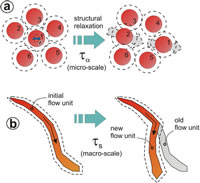A review of mass and energy flow through a lava flow system: insights provided from a non-equilibrium perspective
Simone Tarquini (2017).
Bulletin of Volcanology, 79/64, https://doi.org/10.1007/s00445-017-1145-5.
Abstract
A simple formula relates lava discharge rate to the heat radiated per unit time from the surface of active lava flows (the “thermal proxy”). Although widely used, the physical basis of this proxy is still debated. In the present contribution, lava flows are approached as open, dissipative systems that, under favorable conditions, can attain a non-equilibrium stationary state. In this system framework, the onset, growth, and demise of lava flow units can be explained as a self-organization phenomenon characterized by a given temporal frequency defined by the average life span of active lava flow units. Here, I review empirical, physical, and experimental models designed to understand and link the flow of mass and energy through a lava flow system, as well as measurements and observations that support a “real-world” view. I set up two systems: active lava flow system (or ALFS) for flowing, fluid lava and a lava deposit system for solidified, cooling lava. The review highlights surprising similarities between lava flows and electric currents, which typically work under stationary conditions. An electric current propagates almost instantaneously through an existing circuit, following the Kirchhoff law (a least dissipation principle). Flowing lavas, in contrast, build up a slow-motion “lava circuit” over days, weeks, or months by following a gravity-driven path down the steepest slopes. Attainment of a steady-state condition is hampered (and the classic thermal proxy does not hold) if the supply stops before completion of the “lava circuit.” Although gravity determines initial flow path and extension, the least dissipation principle means that subsequent evolution of mature portions of the active lava flow system is controlled by increasingly insulated conditions.


